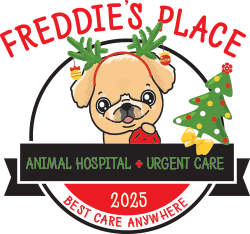 Should Your Dog be Crate Trained?
Should Your Dog be Crate Trained?
A debate about “crate” or kennel training dogs has raged for decades. Once dogs moved from “Snoopy” styled dog houses in America’s back yard, and into the house as more family than pet, the question of how to restrain or corral a dog in your home, without putting him in a tiny cage all day, became a debatable subject, and BOY do people debate it! Some see it as a necessary part of training, and that most dogs quickly adjust and get used to the idea of their cage… while others see it as nothing more than a prison sentence and believe that having a dog in a confined area all day is cruel to the animal. Why have a pet if you’re going to segregate and isolate the animal?
Frankly, there is no “right” answer, but studies show some very clear pro’s and con’s for crate training. In fact, the majority of veterinarians and experts truly believe that a dog having his own “room”, or area, has more positives than negatives for the canine AND for the house/household.
Room and BORED!
There are many people that see cage/crate training as cruel and confining, they believe the dog will view it as punishment and a physical barrier from the family that they are so devoted to. Some of the main pain points to crating your dog that experts see are…
Safe Space and Nap Place
We started with those negative points to get them out of the way, so we could then feature this list of major positives and gains that a crate can bring to a pets life. Crating is a key step in training, creates a more mature and well behaved pet (in most cases), becomes a safe space and a place of comfort for the fur kids. When its presented in a positive light and brought into the dogs life correctly, a kennel is the dogs place and represents comfort and security.
Here are a few of the net benefits a home kennel can bring to your dog…
Although it seem like there are less “Pro’s”, one could simply separate the segments of the “Pro’s” into smaller individual bullet points that would clearly truly show the positive nature of a dog having their own cool kennel. A solid crate, properly assembled, having all the items a dog needs to thrive while alone, used wisely as a positive area, not overused or used as a punishment zone, and presented as a benefit to the animal, will teach the dog to settle into the cage and not resist it. Having a dog crate trained is better for the animal, the human parents, and the shared environment that they all live in.
As we mentioned before, a cage is forever for some dogs. Even if they graduate to having their kennel door open when mom and dad are gone, the animal still looks to his room as a zone of comfort, a resting place, and a safe haven. The fact that they have matured enough to roam freely while their humans are gone simply shows the pets maturity and all they have gained. Some dogs will never have free access to the home when their people are gone. Sometimes its a parents anxiety, sometimes its a pet that simply never loses that curiosity and love of the unknown. Either way, if a pet learns to accept the crate as “their room” and learns to enjoy having that personal space, its a huge win for everyone involved.
We can’t tell you what you should do. It depends on the dog, the humans, the home, the schedule the dog will need to adhere to, and the dogs acceptance of confinement. We do believe that a correct sized crate is much better than being locked in a bathroom or hallway, chained outside or in a garage, or making a decision not to have a pet at all. It’s a personal choice, and one you should take seriously before you decide to bring a dog into a home with no full time “at home” human.
That’s it for today’s Dog Blog, and we hope you found out something you hadn’t considered or didn’t know. We’ll be back soon with another installment in our blog series. Until then, remember that Spring is happening all around us, and the official launch of spring is only days away.
Be sure your pets have all their flea and tick prevention, consider spay/neuter surgery to eliminate any unwanted accidental grand-fur kids, and make plan to up that outdoor time with your best fur friends. They count on you to help them live their best lives, and repay you with unconditional love and affection. Be the person your pet already thinks you are!!
Be good, be safe, be happy, be outstanding in all that you do… and always remember to be Pet Friendly, #FreddieSez!
Research Partners for Today’s Blog




Leave A Comment